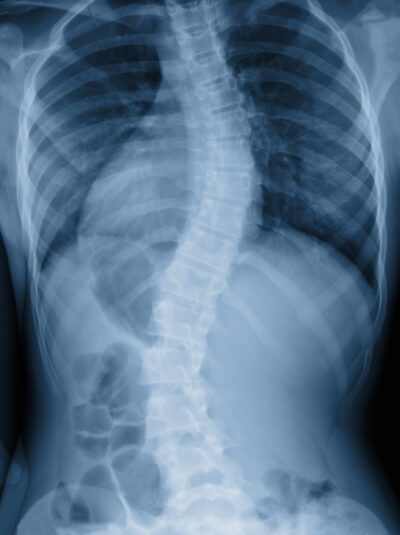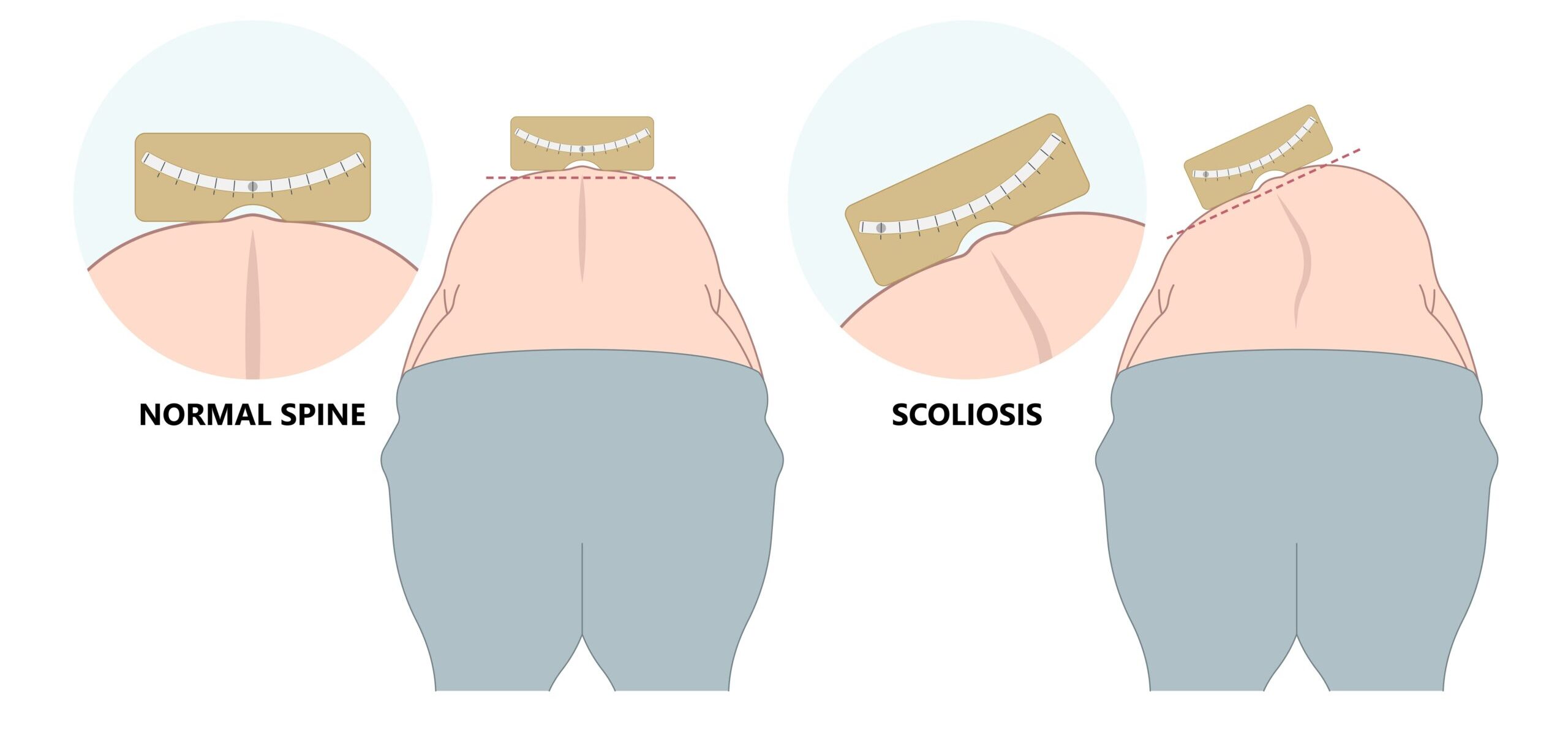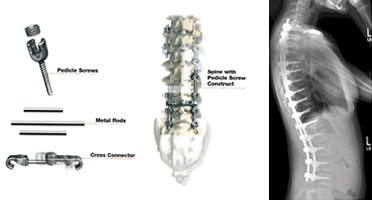What is Scoliosis?
Scoliosis is defined as a side-to-side curvature of the spine. When looking at an x-ray of the spine in an individual with scoliosis, the spine may appear to have an “S” or a “C” curve. However, scoliosis is a complex three-dimensional deformity.
This condition affects approximately 7 million people in the United States, with the majority of cases occurring from age 10 through adulthood.

Early Onset Scoliosis
Early onset scoliosis (EOS) refers to spinal deformity or curvature of the spine in a child under the age of 10. EOS often occurs in patients with other health problems, including chest wall deformities, neuromuscular diseases, or spinal tumors. It is important for patients to receive a diagnosis and begin treatment for early onset scoliosis as soon as possible to achieve the best long-term results for the child. Depending on the severity of EOS, the child may also have heart and lung problems that can become life-threatening over time if left untreated. The goal of treatment for EOS is to minimize spinal deformity and complications, while maximizing lung function and motion of the chest and spine.
Scoliosis Symptoms & Diagnosis
Scoliosis is usually painless. A parent or doctor may suspect scoliosis if one shoulder appears to be higher than the other or the pelvis appears to be tilted. Untrained observers often do not notice the curvature of the spine in the earlier stages. Children’s modesty causes them to avoid undressing in front of their parents. When the child is in a bathing suit, one may notice a sideways curvature of the spine or an elevation of one shoulder or hip.
During an examination for scoliosis, the doctor will ask your child to bend forward to reveal any rotational deformities. This is called the “Adam’s Forward Bend Test.” He will also check for any limb-length discrepancies, abnormal neurological findings, or other potential causes of scoliosis.

Treatment Options For Scoliosis
If your child has scoliosis, it is important to seek treatment. Without treatment, scoliosis can progress, causing functional issues and lower quality of life over time. There are different treatment options available, depending on the severity of your child’s scoliosis. Your physician will suggest the best treatment option for your child. Treatment options can include the following:
Observation
If it is a small curve, your doctor may recommend continual observation to check for progression as the child or adolescent grows. X–rays will usually be reviewed every 4 to 6 months.
Bracing
Bracing may be recommended to prevent the curve from getting worse. Advances in orthotics and prosthetics have led to much more comfortable and lighter weight polypropylene plastic braces for scoliosis. In addition to the the foam-lined, body jacket-type TLSO (Thoracic Lumbar Sacral Orthosis) of the Boston type, nighttime–only Providence Braces have been shown to be just as effective for certain patterns of scoliosis. Experts continue to study the effectiveness of these newer braces in preventing progression of scoliosis. Unfortunately, no brace has been proven to actually improve scoliosis. That desired outcome is only available via surgical treatment.
Surgery
Surgical treatment of scoliosis is usually reserved for curves that have progressed beyond 40 to 45 degrees. If left untreated, continued progression of these curves may lead to chronic, severe pain, deformity, psychosocial disability, and pulmonary dysfunction.
Surgical Procedures For Scoliosis
When surgery is indicated, Dr. Lago will offer the most advanced and proven techniques in reconstructive spinal surgery.
The surgical procedure used to correct scoliosis is called a spinal fusion. During this procedure, Dr. Lago will realign the bones in the spine and fuse them together using a bone graft so that they heal together into a solid piece of bone. Bone grafts may be taken from the patient’s hip, or an allograft may be taken from cadaver bone.
Dr. Lago uses different devices and technologies during the procedure, including pedicle screws, growing rods, and intra–operative image guidance.
Pedicle Screws

Pedicle screws are used to anchor the correcting rods to the spine to prevent further movement while the spine is being fused with bone grafts. The screws are used to correct rotation as well as to treat deformity in the coronal and sagittal planes. The pedicle screws can be placed at multiple levels throughout the spine depending on the severity of the curve. The rods are then connected to the pedicle screws.
Growing Rods
Growing rods are used to stabilize the spine in very young children with severe scoliosis, sometimes called Early Onset Scoliosis. The rods are placed through the muscles around spine spanning the curve and are usually attached with screws. Growing rods allow for continued, controlled growth of the spine in juvenile patients with scoliosis. The rods are then lengthened on a regular basis, approximately every 6 to 12 months.
Recovering From Scoliosis Surgery
After surgery, your child will need to stay in the hospital for about a week. Following discharge from the hospital, your child will need to recover at home for about 3 weeks, on average. If school is in session, you may want to arrange for about 3–6 weeks of homeschooling with your child’s school.
During the recovery period, your child will need to avoid running, bending, and twisting at the waist. Your child must also avoid lifting anything heavier than 5 pounds. Full recovery can take from 6 months to 1 year, as the bones must achieve a solid fusion. After full recovery, your child can resume all normal activities, except for contact sports.
After scoliosis surgery, most patients will be able to function normally at the level they were prior to surgery. In most cases, additional procedures are not needed.
Scoliosis Treatment in Edinburg, Texas
Dr. Michael Lago has extensive experience in helping children with scoliosis achieve a better quality of life. We will help you through every step of the diagnosis and treatment process. If you think your child may have scoliosis and would like an evaluation, please call our office at 956-668-0060 or request an appointment via our convenient online form.
